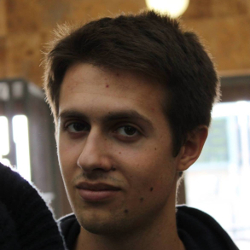G26
- G26 Pattern di validazione della mesh
Dipendenze
G26_MESH_VALIDATIONabilitato
Utilizzo
G26 B<temp> C D H<temp> F<diam. filam.> K L<layer> O<length> P<length> Q<intero> R<intero> S<intero> U<intero> X<pos> Y<pos>
Il comando G26 è progettato per essere usato insieme ad un sistema di livellamento basato sull'utilizzo di una mesh. Il suo scopo è quello di permettere all'utente di valutare l'accuratezza della mesh che viene utilizzata da MK4duo per correggere l'altezza del nozzle durante gli spostamenti.
Tramite questo comando è possibile stampare un pattern dello spessore di un singolo layer sopra l'intera area di stampa, fornendo così una chiara indicazione di quanto ciascun punto della mesh è stato definito in maniera corretta. G26 può essere utilizzato per determinare sia quali zone della mesh non sono perfette, sia di quanto ciascun punto della mesh debba essere corretto.
Parametri

- B # Temperatura del piatto. Se non specificata, si assume quella di default (ovvero 60°C).
- C La presenza di questa flag nel comando indica alla macchina di usare la posizione attuale del nozzle come base per ogni comparazione della distanza durante la ricerca dei punti di intersezione della mesh da disegnare.
- D Disable Disable the Mesh Bed Leveling System. In the normal case the user is invoking this
- command to see how well a Mesh as been adjusted to match a print surface. In order to do
- this the Mesh Bed Leveling System is turned on by the G26 command. The D parameter
- alters the command's normal behaviour and disables the Mesh Bed Leveling System even if
- it is on.
- H # Hotend Set the Nozzle Temperature. If not specified, a default of 205 C. will be assumed.
- F # Filament Used to specify the diameter of the filament being used. If not specified
- 1.75mm filament is assumed. If you are not getting acceptable results by using the
- 'correct' numbers, you can scale this number up or down a little bit to change the amount
- of filament that is being extruded during the printing of the various lines on the bed.
- K Keep-On Keep the heaters turned on at the end of the command.
- L # Layer Layer height. (Height of nozzle above bed) If not specified .20mm will be used.
- O # Ooooze How much your nozzle will Ooooze filament while getting in position to print. This
- is over kill, but using this parameter will let you get the very first 'circle' perfect
- so you have a trophy to peel off of the bed and hang up to show how perfectly you have your
- Mesh calibrated. If not specified, a filament length of .3mm is assumed.
- P # Prime Prime the nozzle with specified length of filament. If this parameter is not
- given, no prime action will take place. If the parameter specifies an amount, that much
- will be purged before continuing. If no amount is specified the command will start
- purging filament until the user provides an LCD Click and then it will continue with
- printing the Mesh. You can carefully remove the spent filament with a needle nose
- pliers while holding the LCD Click wheel in a depressed state. If you do not have
- an LCD, you must specify a value if you use P.
- Q # Multiplier Retraction Multiplier. Normally not needed. Retraction defaults to 1.0mm and
- un-retraction is at 1.2mm These numbers will be scaled by the specified amount
- R # Repeat Prints the number of patterns given as a parameter, starting at the current location.
- If a parameter isn't given, every point will be printed unless G26 is interrupted.
- This works the same way that the UBL G29 P4 R parameter works.
- NOTE: If you do not have an LCD, you -must- specify R. This is to ensure that you are
- aware that there's some risk associated with printing without the ability to abort in
- cases where mesh point Z value may be inaccurate. As above, if you do not include a
- parameter, every point will be printed.
- S # Nozzle Used to control the size of nozzle diameter. If not specified, a .4mm nozzle is assumed.
- U # Random Randomize the order that the circles are drawn on the bed. The search for the closest
- undrawn cicle is still done. But the distance to the location for each circle has a
- random number of the size specified added to it. Specifying S50 will give an interesting
- deviation from the normal behaviour on a 10 x 10 Mesh.
- X # X Coord. Specify the starting location of the drawing activity.
- Y # Y Coord. Specify the starting location of the drawing activity.
- Ultima modifica: 14/12/2017 14:26
- da
 Simone Persiani
Simone Persiani